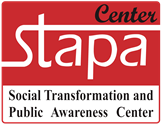STAPA responds to natural or civil disasters that are interruptions of such magnitude that they overwhelm a community’s ability to recover on its own, and women and children should be put at the centre of any emergency response. The immediate goal of STAPA’s emergency response programs is to provide relief and rehabilitation for the entire person-physical, social, and psychological-in a distress situation.
STAPA always works to enable those affected by disasters to take responsibility for relief and recovery work. Wherever possible, STAPA forms partnerships with other religious and secular organizations to pool resources and avoid duplicating efforts. Also, STAPA works collaboratively with local communities to assist them in building peace, restoring social stability, revitalizing community structures, and empowering their members to retake control of their lives.
Poor people particularly women and girls are the main impact disaster in every where emergency situation, and they are particularly vulnerable in times of disaster such as floods, earthquakes, volcanos, and hot mud flood, etc. It was heartening to note the many examples of interventions from hot mud floods in Porong stressing the need to recognize the role of women as responders and actors in relief and rehabilitation. Women should not be treated merely as victims but as partners in changes as the knowledge resource is with community as what is going on in their local settings.
With limited access to information, lack of resources and poor government protection they often suffer the most as a result. That’s why STAPA’s work with people affected by emergencies and conflict plays a key part in our fight against poverty. STAPA responds to emergencies in the short term by providing medicines, water and sanitation, food and shelter to people in need, and we continue to work closely with poor communities to help them rebuild their lives and reduce their vulnerability to future disasters and conflicts by focusing on: Minimising trauma by supporting the emotional recovery of survivors, Reducing vulnerability of poor communities by working together on building their resilience to future disasters, Building peace by addressing the underlying causes of conflict, and Reducing risk of future disasters occurring by reducing hazards supporting communities to adapt to the effects of climate change.

